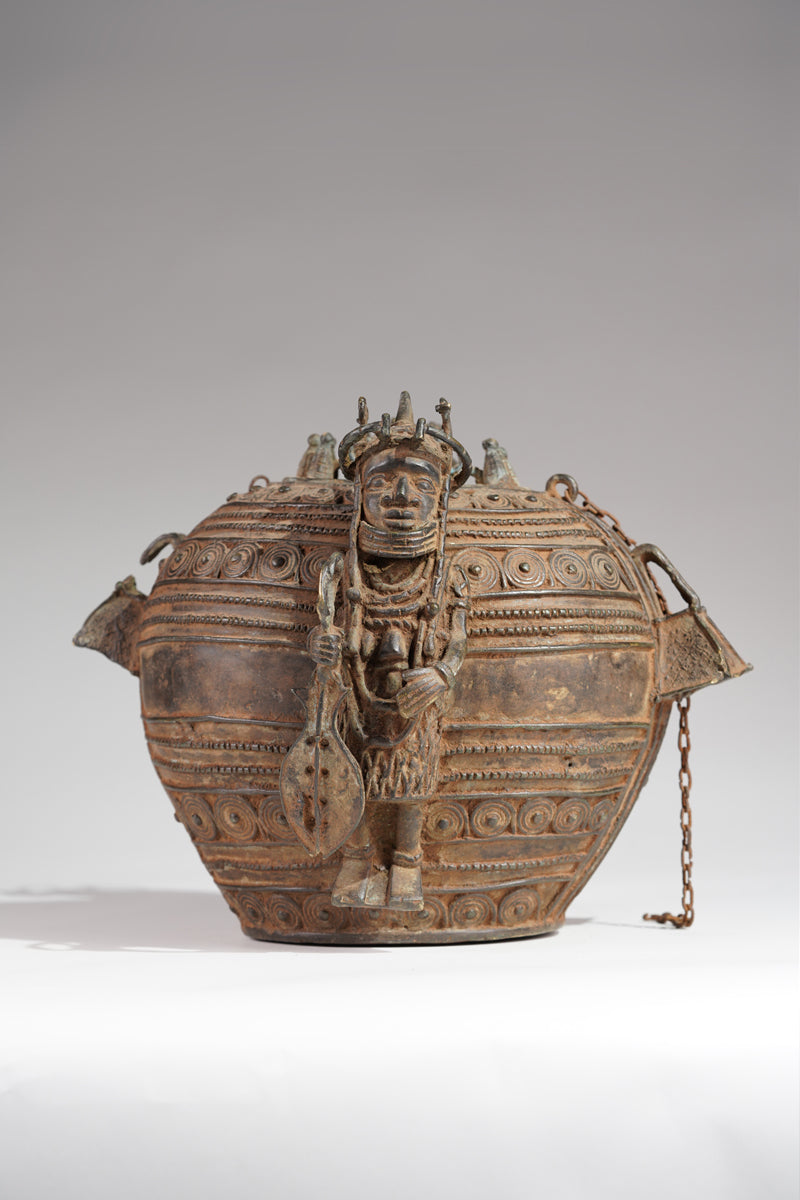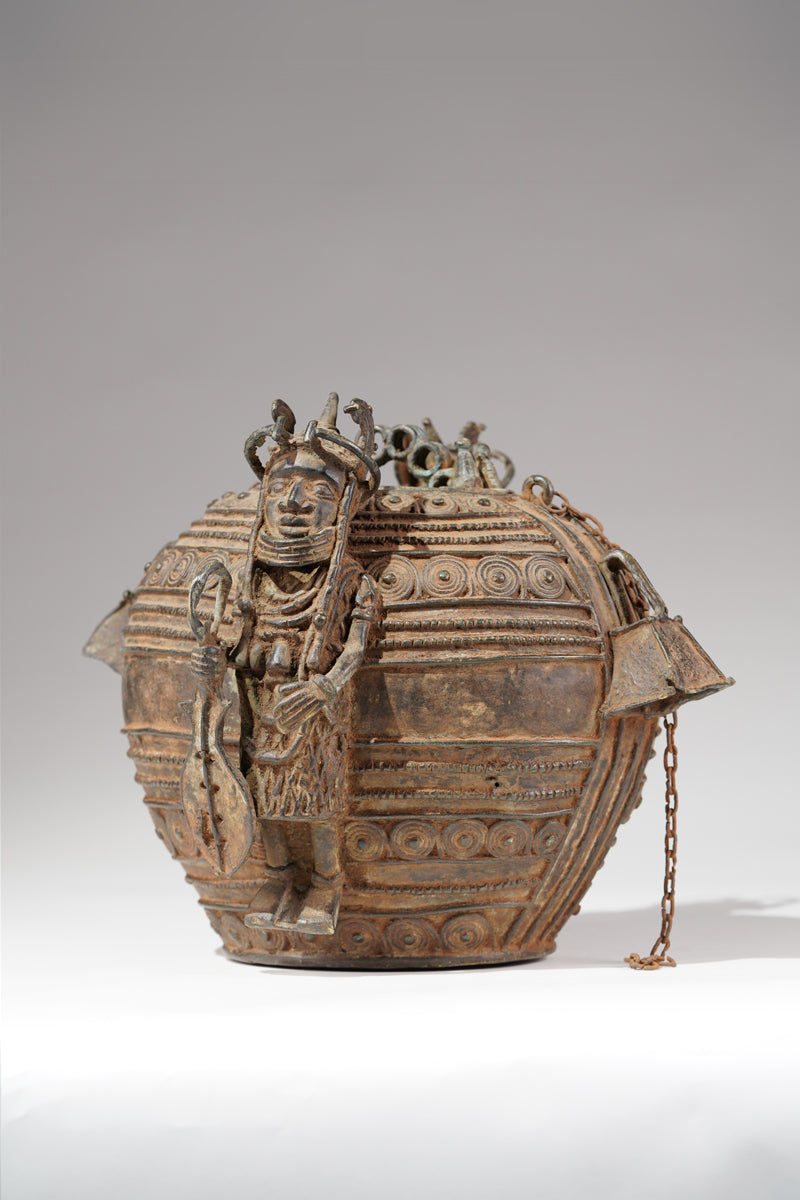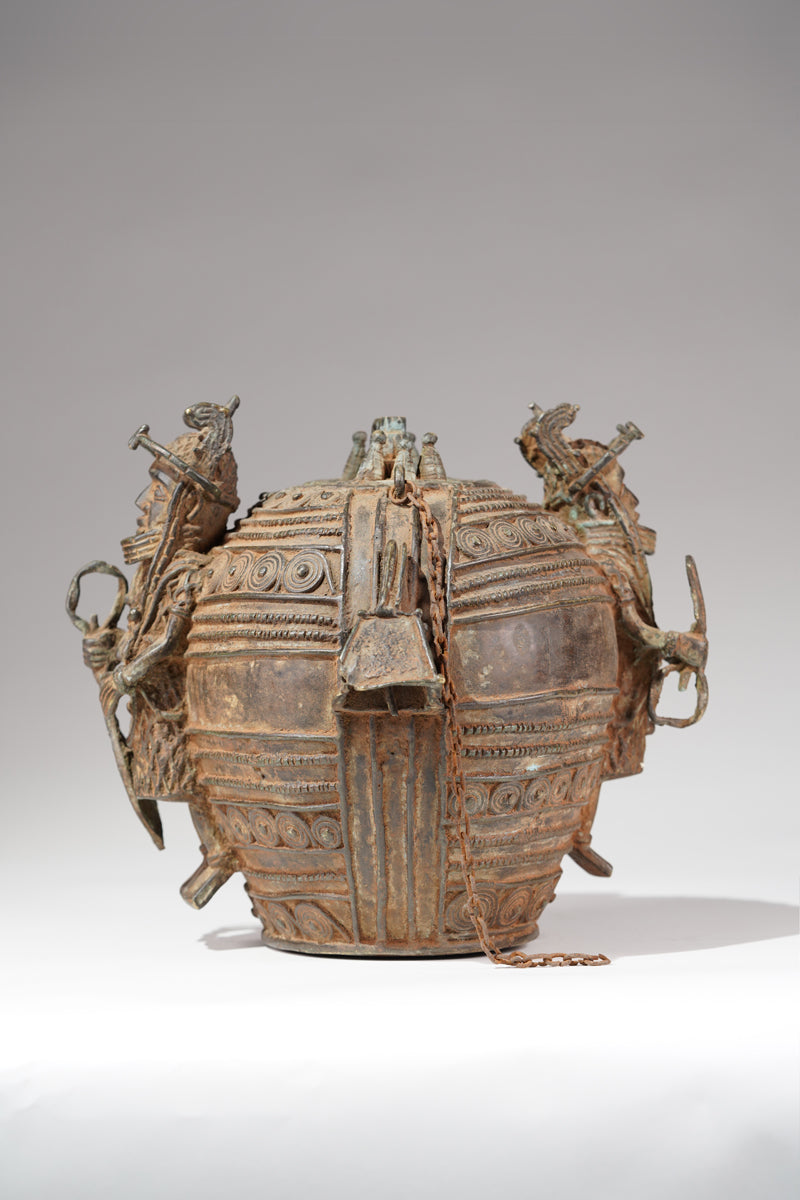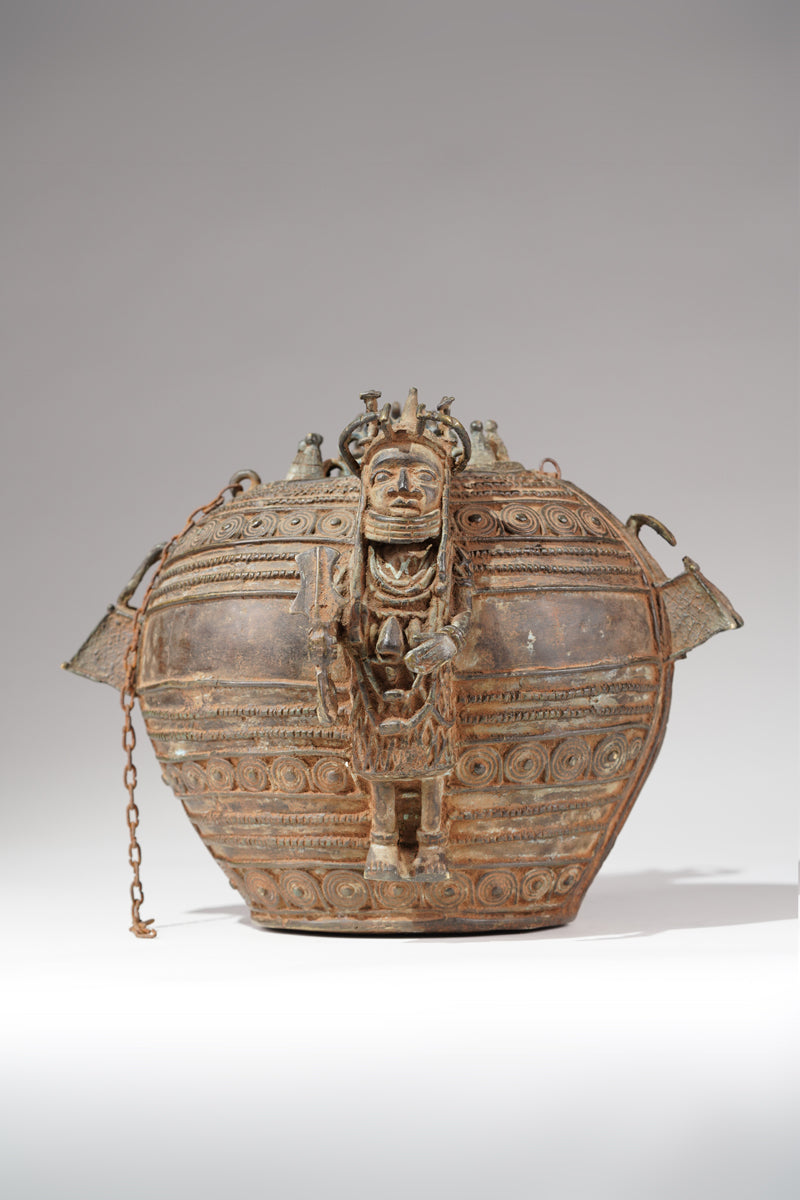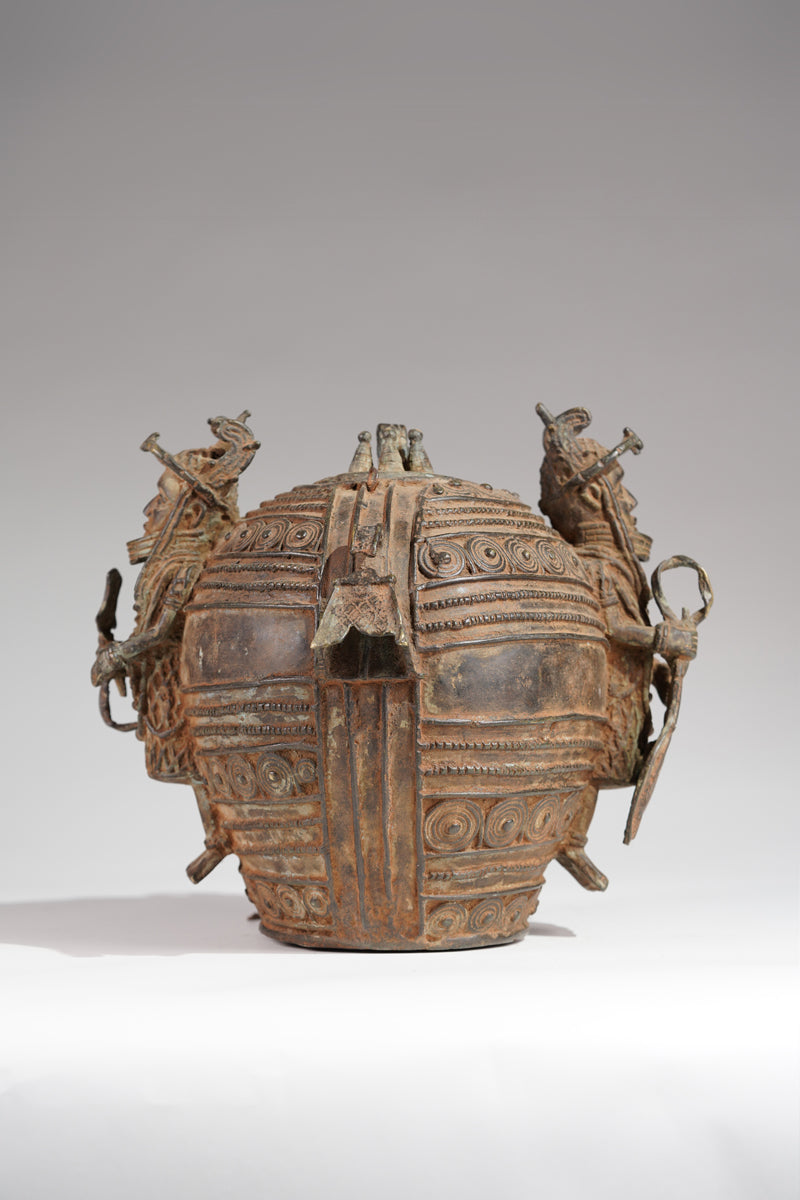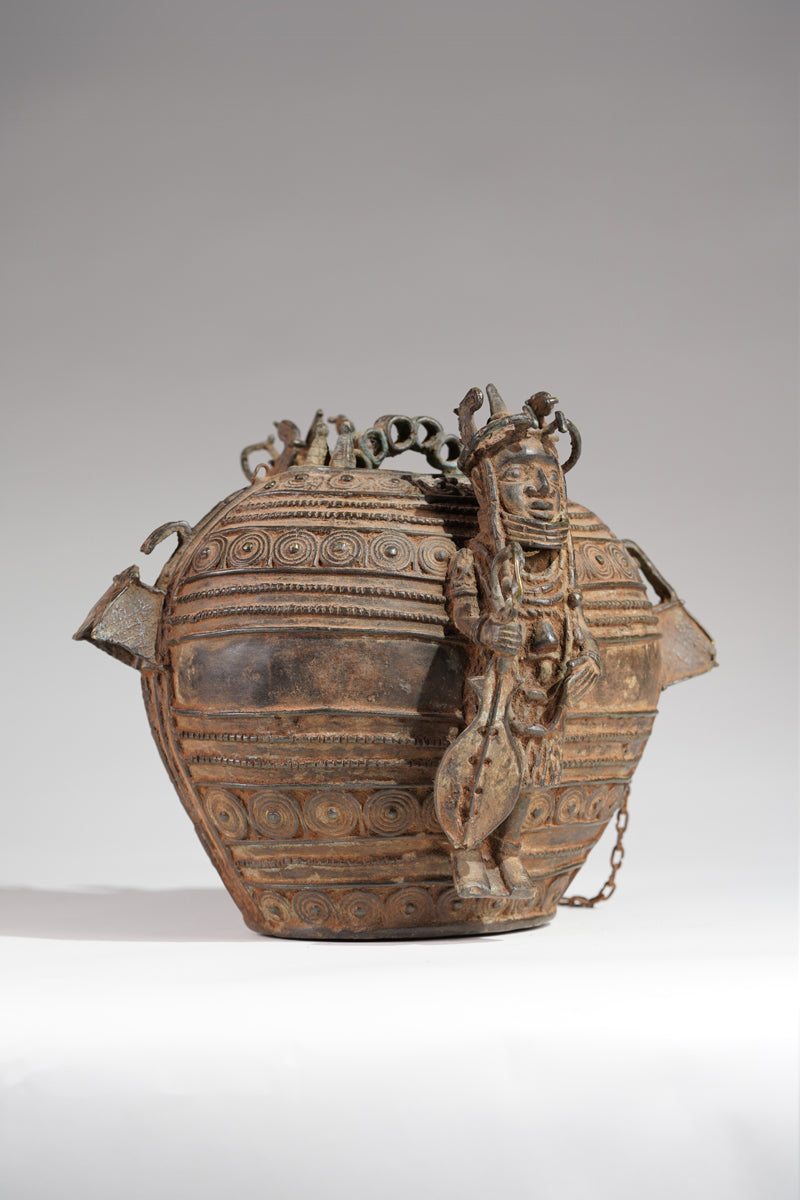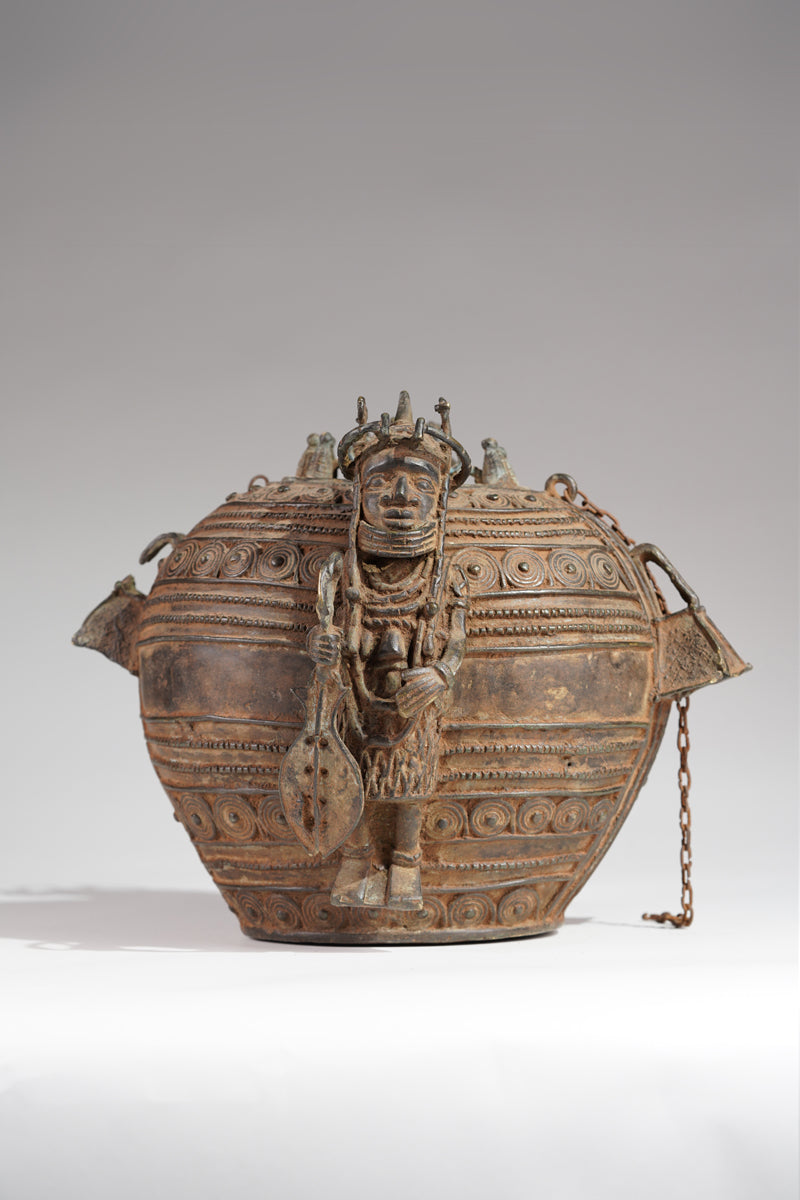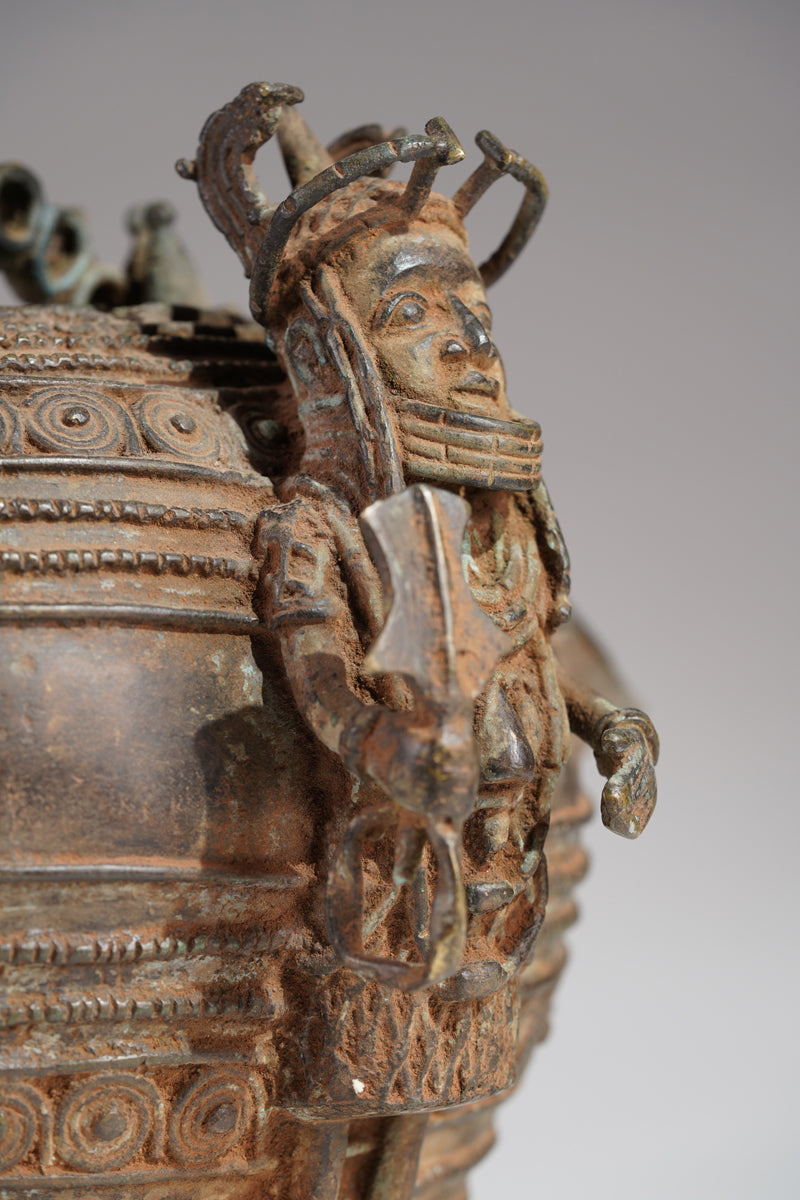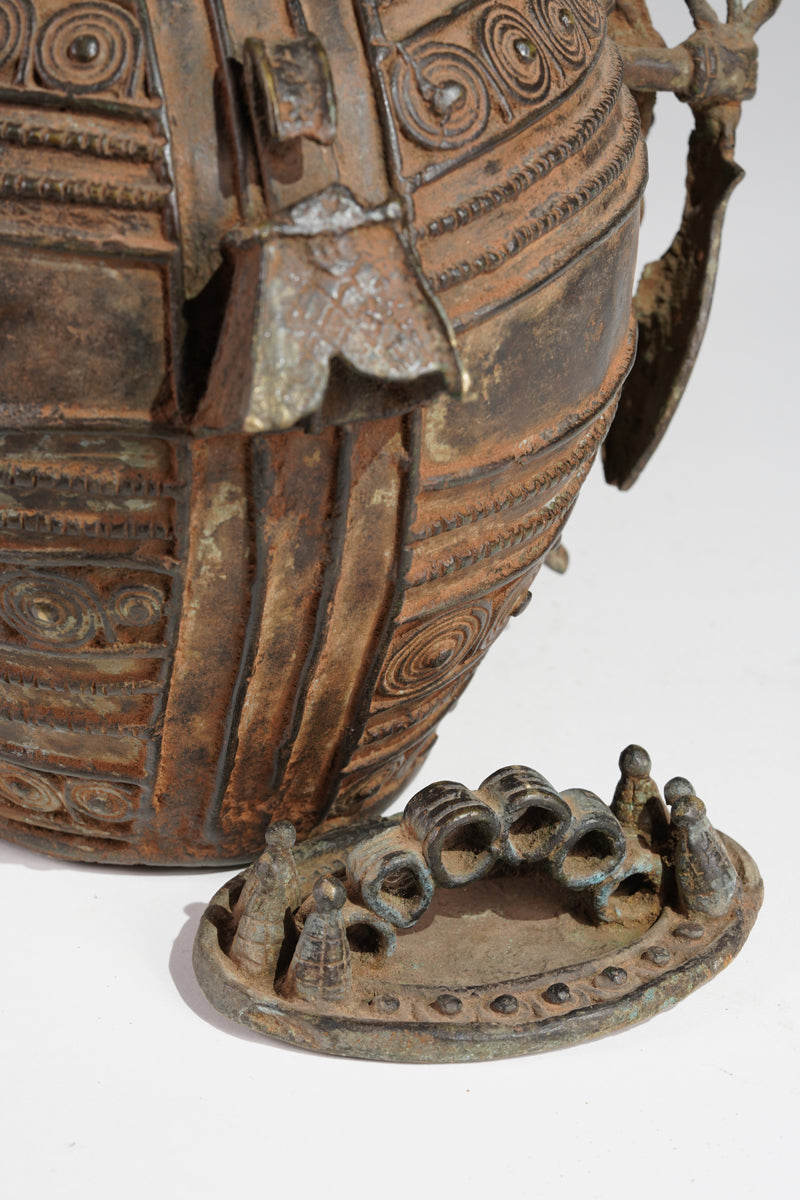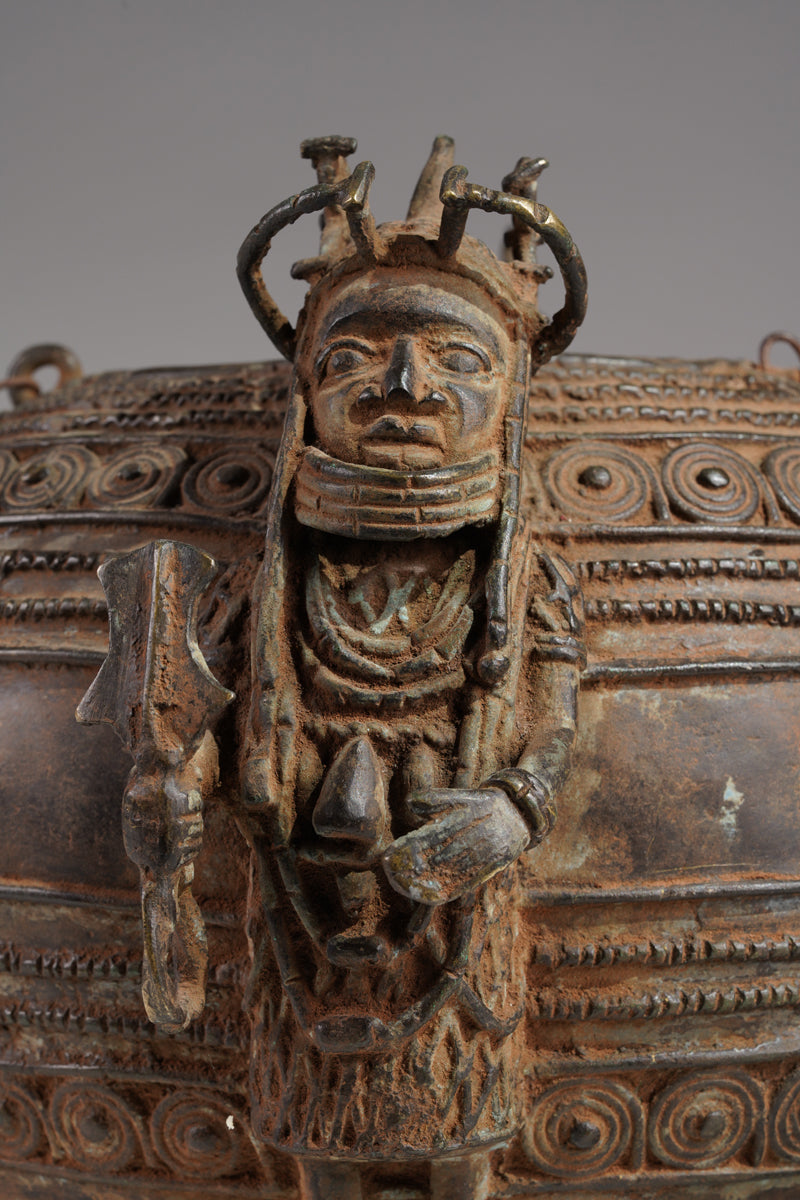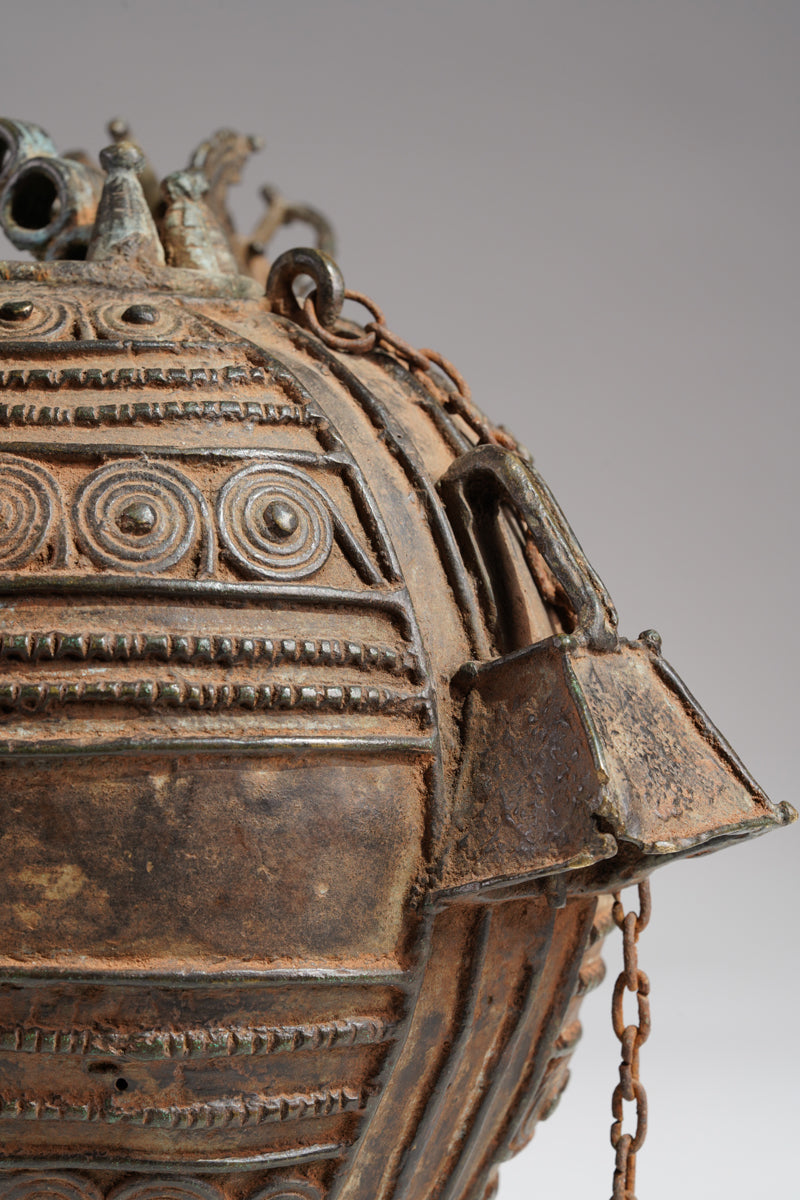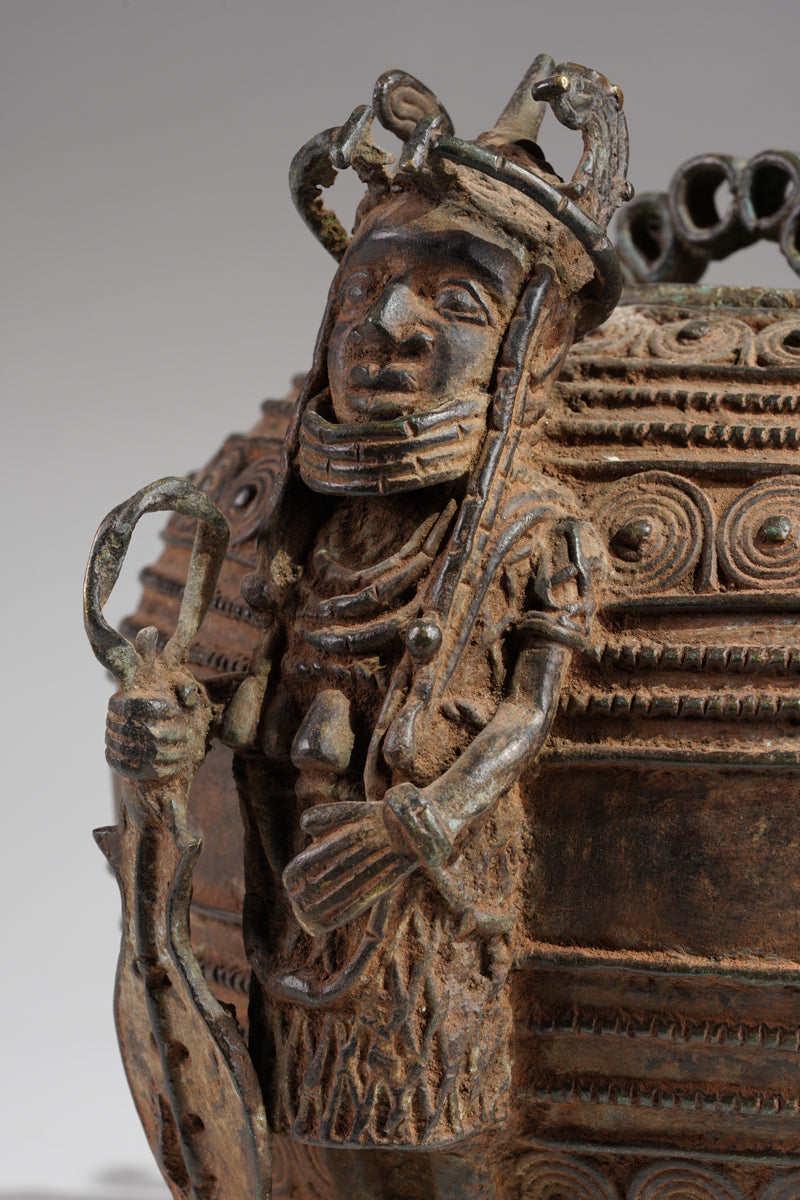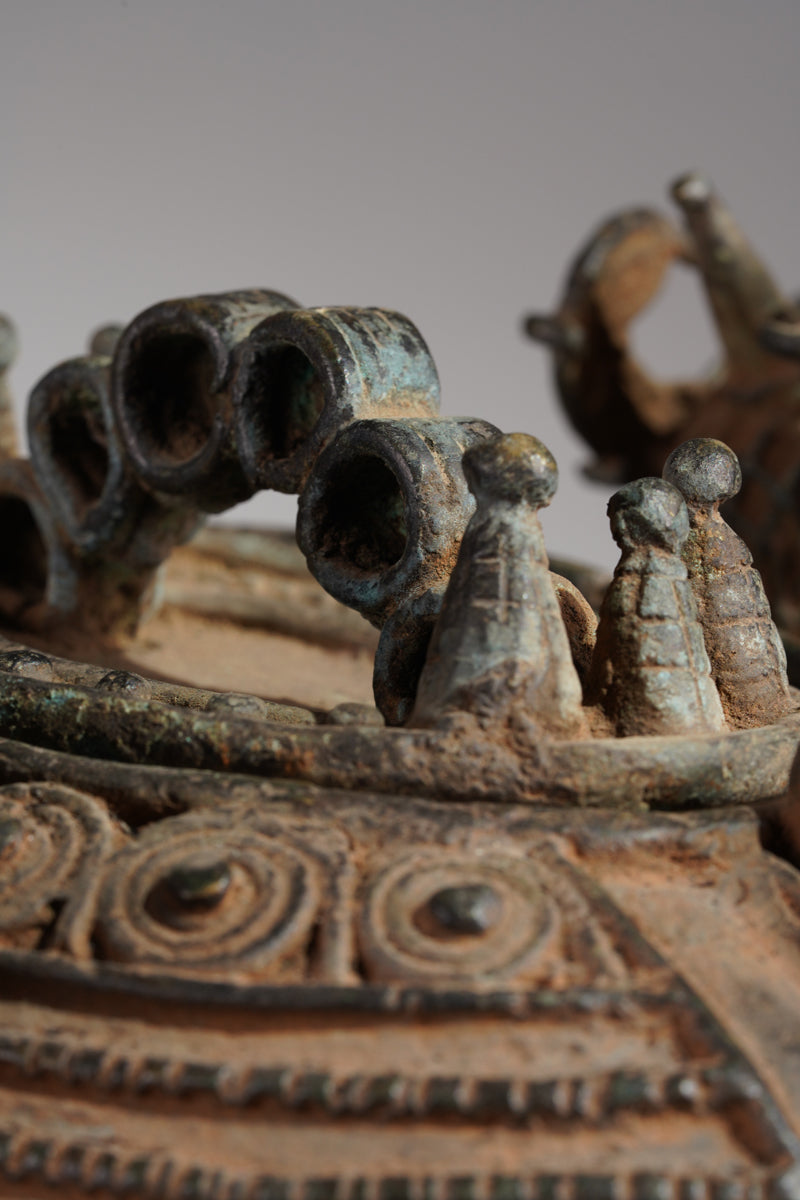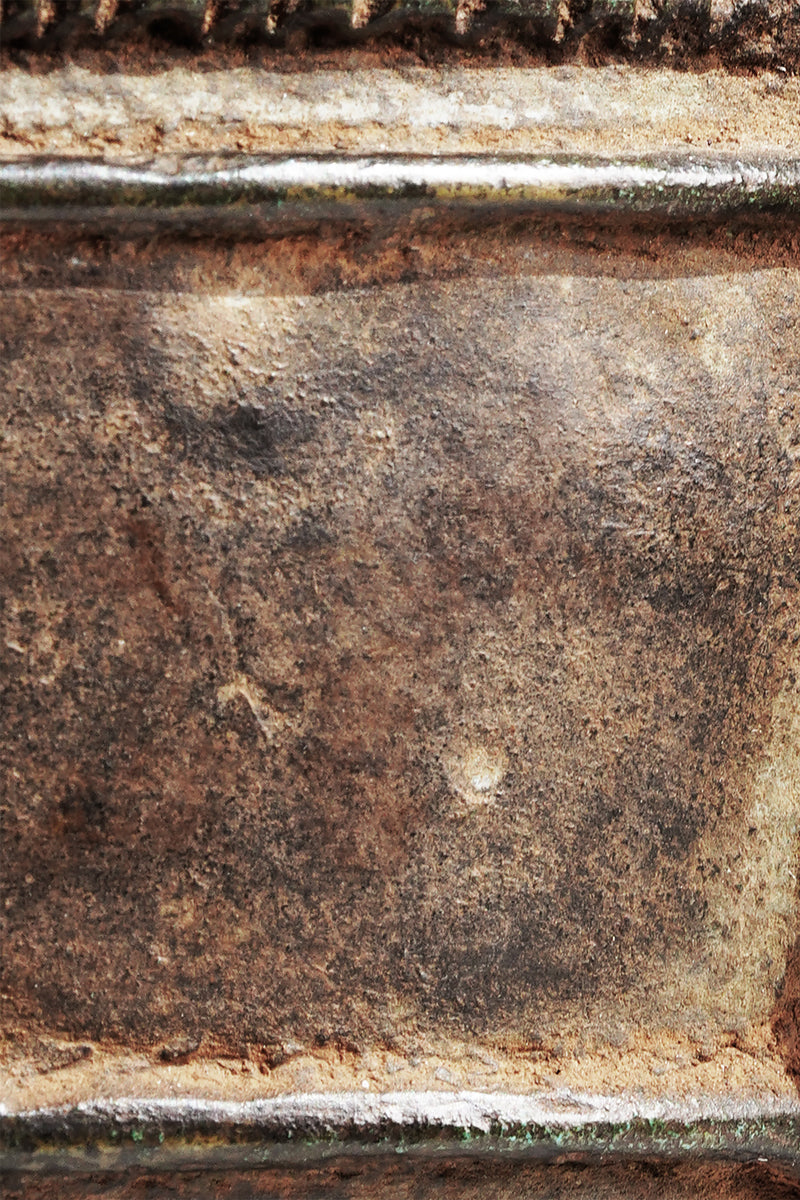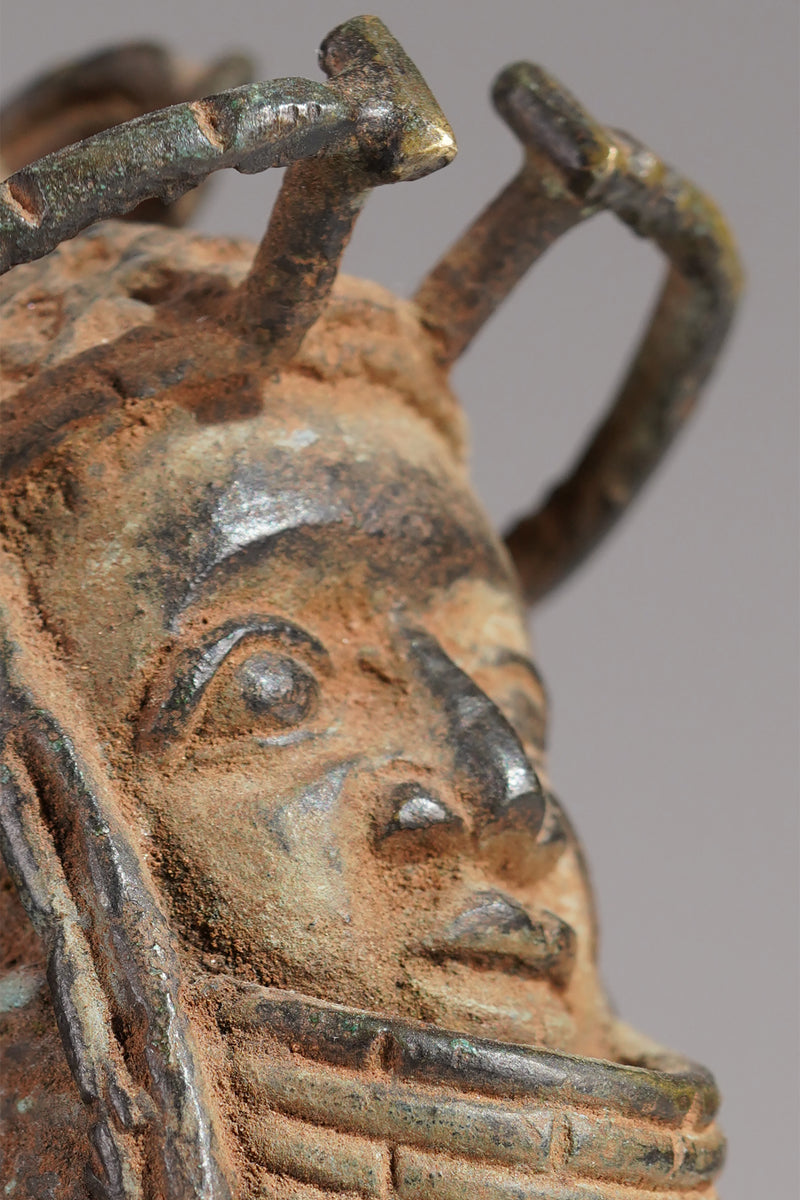wolfgang-jaenicke
The so-called Akhẹ-Osun
The so-called Akhẹ-Osun
Couldn't load pickup availability
The so-called Akhẹ-Osun, also known as Osun pots, are among the most significant ritual and material objects from the historic Kingdom of Benin. These vessels, typically made of terracotta or metal—usually brass or bronze—function far beyond the realm of utilitarian objects. In Edo culture, the ethnic group at the heart of the Benin Kingdom, they are part of a complex religious-magical system in which spiritual practice, royal authority, and material culture are deeply intertwined.
The term Akhẹ in the Edo language refers to a form of medicine or ritual substance, while Osun denotes a spiritual force or entity associated with healing, fertility, and protection. Osun is not merely symbolic but understood as a real presence that can be invoked and made manifest through particular objects. Akhẹ-Osun pots thus serve as material vessels and mediums for these forces, containing ritualized substances—herbs, powders, animal remains, or liquids—that were combined and activated by specially initiated priests, known as obo, for protective or healing purposes.
Within the royal court of Benin, these vessels played a central role in the protection of the Oba (king) and the palace complex. They were embedded into architectural structures, placed beneath thresholds or at spiritual nodes within the palace, and served to repel malevolent forces, ensure ritual purity, and maintain equilibrium between the visible and invisible worlds. Their efficacy was periodically renewed through ritual, especially during ceremonies such as the Igue festival, which served to spiritually cleanse and renew the Oba and reaffirm the cosmic order he embodied.
Iconographically, many of these vessels feature detailed anthropomorphic or zoomorphic figures. Human faces appear in meditative or invocatory postures; leopards, emblems of royal power, and snakes, symbols of spiritual energy, are frequent motifs. The ornamentation is never merely decorative in the Western sense, but functions within the ritual system—it activates, focuses, or channels the power believed to reside in the object. Some pots take on anthropomorphic or animal-like shapes, blurring the line between vessel, spirit, and person.
Akhẹ-Osun are held today in institutions such as the British Museum in London, the Ethnological Museum in Berlin (now part of the Humboldt Forum), the Musée du quai Branly in Paris, and the Museum of Fine Arts in Boston. For much of the twentieth century, they were exhibited primarily as examples of court art, often divorced from their ritual function and spiritual context.
Only in recent years, through international exhibition projects such as Benin – Kings and Rituals: Court Arts from Nigeria (2007) and Looted Art? – The Benin Bronzes (2021, Hamburg), have these objects been reframed. They are increasingly viewed not only as works of art but as spiritually active objects whose meaning is not neutralized by their museum display. Within the current debates on restitution, they hold particular significance: as sacred objects removed through colonial violence, they lie at the heart of ethical and political discussions surrounding ownership, repatriation, and cultural justice.
Scholarly engagement with Akhẹ-Osun demands an interdisciplinary approach, combining art historical, ethnographic, and theoretical perspectives. These vessels cannot be fully understood through formal analysis or contextual data alone; their meaning unfolds through the interplay of materiality, ritual action, and worldview. Their performative agency exemplifies a spiritual economy in which objects are not passive things but active participants in a sacred order.
This Akhẹ-Osun container comes from the collection of a well-known collector and antique dealer from Ghana/Lomé, who worked closely with the Swiss dealer Réné David in his younger years.
Height: 27 cm
Width: 35 cm maximum
Weight: 7,3 kg
















